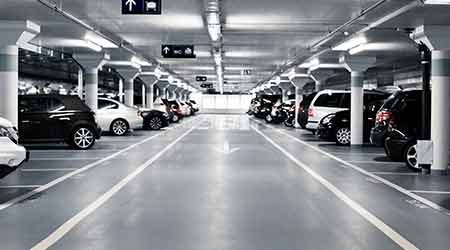 Protecting tough surfaces means conducting inspections, understanding condtitions and applying the right coatings.
Protecting tough surfaces means conducting inspections, understanding condtitions and applying the right coatings.Concrete Maintenance: Building Envelopes
Building envelopes are exposed to the outside elements and face regular maintenance. Applying the right coating can help prolong the building envelope's life span.
Part three of a four part series.
Building envelopes
As with sidewalks and drive aprons, concrete building envelope components are exposed directly to the outside environment. This environment, with its daily temperature changes and exposure to water, causes most of the problems encountered in the concrete components of a building envelope. As with parking garages, the damage starts small, and unless technicians correct it rapidly, it can become extensive and expensive. But unlike parking garages, most of the damage is easy to detect early with regular inspections.
At least once each year, workers should inspect all concrete envelope components, looking for bulging or any areas showing movement. They should note any surface defects. While all concrete components crack, they should note the location and extent of all cracks. Some will be minor surface cracks and require minor repairs. Others might be structural cracks that require further examination to determine its cause and required correction.
Workers also should look for and record the location of spalling and other surface defects. Tracking these defects over time provides information on the extent of the problem and its severity.
All areas with exposed rebar should be sealed as quickly as possible to prevent the rebar from corroding and expanding the area of damage. Depending on the facility’s location, the environment to which it is exposed, and the condition of the concrete, managers might want to consider the application of a protective treatment. These treatments include different sealing compounds and coatings that include such materials as linseed oil, penetrating sealers, and epoxy and latex paints.
While none of the treatments will waterproof concrete, they will slow concrete deterioration. Most are not required for new construction. Rather, they are more commonly applied when early signs of deterioration occur.
James Piper, P.E., is a national facilities consultant based in Bowie, Md. He has more than 30 years of experience with facilities maintenance and engineering issues.
Related Topics:















